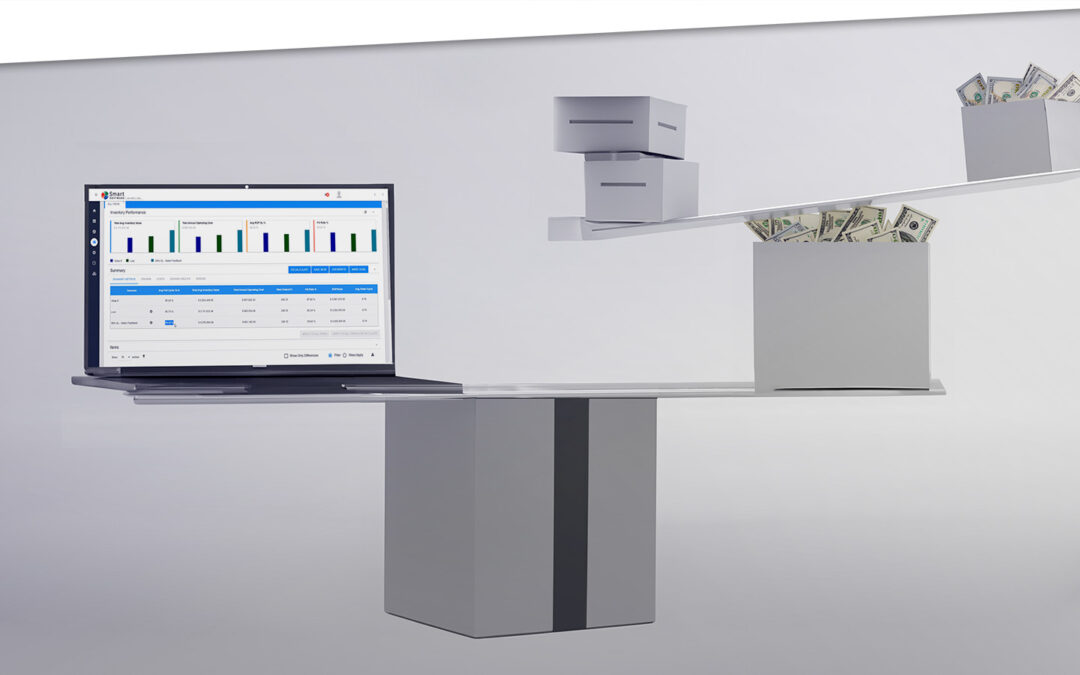Inventory managers have the problem of handling tens or even hundreds of thousands of products, each with unique properties, demanding sophisticated and time-consuming calculations. The proactive management of big inventories becomes unfeasible in the absence of a systematic approach and effective analytic tools.
Without inventory optimization, businesses run the risk of overpaying and underperforming. Manufacturers, distributors, and MRO inventory managers frequently err on the side of caution when setting stocking levels to prevent expensive shortages. Establishing the ideal stock levels for manufacturers, distributors, and MRO should be a science, not an art.
Learn industry best practices on how to optimize inventory to save on costs, meet demand, and streamline your supply chain below.

Why MRO Businesses Should Care About Excess Inventory
Do MRO companies genuinely prioritize reducing excess spare parts inventory? From an organizational standpoint, our experience suggests not necessarily. Boardroom discussions typically revolve around expanding fleets, acquiring new customers, meeting service level agreements (SLAs), modernizing infrastructure, and maximizing uptime. In industries where assets supported by spare parts cost hundreds of millions or generate significant revenue (e.g., mining or oil & gas), the value of the inventory just doesn’t raise any eyebrows, and organizations tend to overlook massive amounts of excessive inventory.

Constructive Play with Digital Twins
Those of you who track hot topics will be familiar with the term “digital twin.” Those who have been too busy with work may want to read on and catch up. While there are several definitions of digital twin, here’s one that works well: A digital twin is a dynamic virtual copy of a physical asset, process, system, or environment that looks like and behaves identically to its real-world counterpart. A digital twin ingests data and replicates processes so you can predict possible performance outcomes and issues that the real-world product might undergo.

Are You Playing the Inventory Guessing Game?
Some companies invest in software to help them manage their inventory, whether it’s spare parts or finished goods. But a surprising number of others play the Inventory Guessing Game every day, trusting to an imagined “Golden Gut” or to plain luck to set their inventory control parameters. But what kind of results do you expect with that approach?

Finding Your Spot on the Tradeoff Curve
Managing inventory, like managing anything, involves balancing competing priorities. Do you want a lean inventory? Yes! Do you want to be able to say “It’s in stock” when a customer wants to buy something? Yes!
But can you have it both ways? Only to a degree. If you lean into leaning your inventory too aggressively, you risk stockouts. If you stamp out stockouts, you create inventory bloat. You are forced to find a satisfactory balance between the two competing goals of lean inventory and high item availability.

Direct to the Brain of the Boss – Inventory Analytics and Reporting
In this blog, the spotlight is cast on the software that creates reports for management, the silent hero that translates the beauty of furious calculations into actionable reports. Watch as the calculations, intricately guided by planners utilizing our software, seamlessly converge into Smart Operational Analytics (SOA) reports, dividing five key areas: inventory analysis, inventory performance, inventory trending, supplier performance, and demand anomalies.

You Need to Team up with the Algorithms
This article is about the real power that comes from the collaboration between you and our software that happens at your fingertips. We often write about the software itself and what goes on “under the hood”. This time, the subject is how you should best team up with the software.
Problem
Keeping inventory investments in check while maintaining high customer service levels is a constant balancing act. Without proper controls, excess inventory grows throughout your supply chain, locking up vital working capital that constrains your company’s growth. Every day, the ERP system makes purchase order suggestions and manufacturing orders based on planning drivers such as safety stock, reorder points, and Min/Max levels. Ensuring that these inputs are understood and continually optimized will generate substantially better returns on your inventory assets. Unfortunately, many organizations rely on rule of thumb logic, institutional knowledge, and “one-size-fits all” forecasting logic that assigns all items within a particular group the same service level target. These approaches yield suboptimal policies that cause inventory costs to balloon and service performance to suffer. Compounding the problem is the sheer volume of data – thousands of items stocked at multiple locations means planners don’t have the bandwidth to proactively review these inventory drivers on a regular basis. This results in outdated reorder points, safety stocks, order quantities, and Min/Max settings that further contribute to the problem.
Solution
Smart Inventory Optimization (SIO™) is available on Smart’s Inventory Planning and Optimization Platform, Smart IP&O. It delivers inventory policy decision support and the means to share, collaborate, and track the impact of your inventory planning policy. This can help realize millions in savings by improving customer service and reducing excess stock. You can forecast metrics such as service level, fill rate, holding costs, ordering costs, and stock out costs. Users can identify overstocks and understocks, adjust stocking policies when demand changes, share proposed policies with other stakeholders, collect feedback, and establish a consensus inventory plan. And unlike traditional inventory planning systems that rely on rule of thumb approaches or require the user to arbitrarily set suboptimal service level targets, Smart Inventory Optimization prescribes the optimal service levels for you. Users can optionally assign service level constraints to ensure the optimization engine respects business rules. SIO provides the required inventory planning parameters for a variety of replenishment policies such as Reorder Point/Order Quantity, Min/Max, Safety Stock Planning, and Order Up to levels.
Register to Watch the Demo
With Smart Inventory Optimization you can:
- Identify where you are overstocked and understocked.
- Modify planning parameters based on your business rules, service targets, and inventory budget.
- Leverage the optimization logic in SIO to prescribe planning parameters and service levels for you.
- Compare proposed policies to the benchmark.
- Collaborate and develop a consensus inventory plan.
- Automatically generate revised planning parameters as demand and other inputs change.
Smart Inventory Optimization

Optimal Inventory Levels
Reduce excess stock
Improve service levels
Minimize buyer transactions
Maximize return on assets

Organizational Consensus
Balance service levels
Identify stockout risk
Identify overstocks
No finger-pointing

Operational Connectivity
Align process with strategic objectives
Empower team to “make it so”
Optimize as conditions change
Pass results to ERP
Who is Inventory Optimization for?
Smart Inventory Optimization is for executives and business savvy planners who seek to:
- Yield maximum returns from inventory assets.
- Address the problem of highly variable or intermittent demand.
- Broker the service vs. cost tradeoffs between different departments.
- Develop a repeatable and efficient inventory planning process.
- Empower the team to ensure operational plan is aligned with strategic plan.
What questions can Inventory Optimization answer?
- What is the best service level achievable with the inventory budget?
- What service levels will yield the maximum return?
- If lead times increased, what would it cost to maintain service?
- If I reduce inventory, what will the impact on service be?
- If order quantity increases, what will the impact on service and costs be?
- What is the order quantity that balances holding and ordering costs?
Inventory forecasting for the inventory executive
Smart Inventory Optimization empowers you to:
- Predict service performance and inventory costs.
- Assess business impact of “what-if” inventory policies.
- Align inventory policy with corporate strategy.
- Establish an operational framework that guides the planning team.
- Reduce inventory and improve service.









